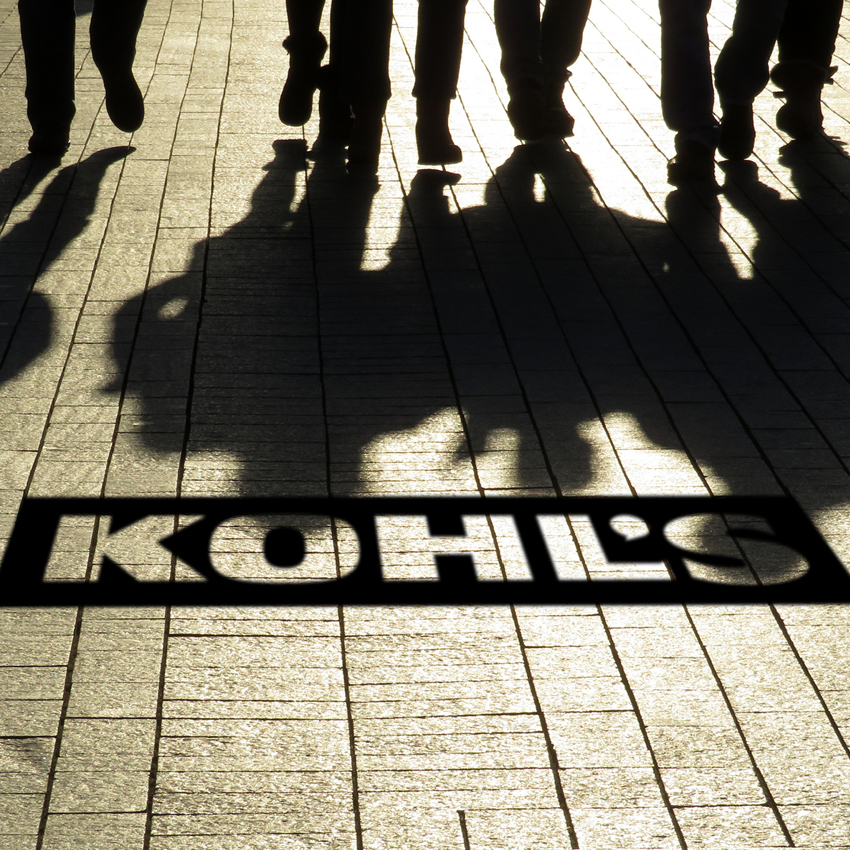I\’ve seen this horrible movie before with one notable actor leading the attack on Children\’s Place in 2015. Johnathan Duskin, CEO Macellum Advisors GP, is apparently leading the sequel, \”Activist Pirates Attack Kohl\’s,\” along with Legion Partners Holdings, Ancora Advisors and 4010 Capital, (with an equity position of just under 10 percent). They are determined to replace five board seats (down from nine) ostensibly to drive cost cutting, including executive pay packages.
The activists also want to boost revenues and margins through better merchandising, as well as unlocking value by doing a sale-leaseback deal (which has a past history of squeezing retailers to death by excessive lease arrangements). If you\’ve been living on Mars, all of this may sound wonderful; unlocking value and cutting costs are a good thing. However, I have not been living on Mars. Unlocking value and pumping up share price for their ultimate cash out is what it\’s all about. But the real question is: Does Kohl\’s need any of this? The huge assumption is whether this new band of pirates (with questionable credentials) could even do what they say they can.
[callout]Kohl’s, under the visionary leadership of Michelle Gass, does not need anything that money-grubbing short-term activists offer. Furthermore, pirates are an enormous distraction and disruption of the positive strategic path she is now executing.[/callout]
My short answer: Kohl\’s, under the visionary leadership of Michelle Gass does not need anything that these money-grubbing, short-termers offer. Furthermore, the activists would be an enormous distraction and disruption of the positive strategic path she is now executing. The process must have already diverted some of the time and focus that Gass and her teams have been spending on implementing the strategy.
The First Movie
This Kohl\’s sequel to the Children\’s Place thriller repeats the same pIot and narrative, and I believe will have the same bad ending for the antagonists. Full disclosure, I actually like being an activist myself — but a special kind. I like attacking financial activists who assume they understand the businesses they are attacking yet build retail stories based on the only thing they do understand: the numbers. These stories are all about creating greater shareholder value, but mask the insidious real objective, which is to make tons of money for themselves, as quickly as possible. Sadly, 90 percent of them don\’t know what the word strategy means and couldn\’t operate their way out of a paper bag, much less lead the process. Most of them destroy more value than they create. The full CP story here.
By the way, the epilogue to the CP activist takeover attempt is that CEO Jane Elfers has had a consistent strategic plan in place for the better part of the last decade. It is clear that without her skillful execution, the outcome for The Children\’s Place could very well have been similar to the scores of other retailers who were unable to survive the pressures of the pandemic. So, Jane and her teams prevailed over this band of pirates, just as I believe Michelle Gass will.
Jonathan Duskin Who?
Having stated this negative opinion about activist pirates, I feel I should offer some facts about the track record of Jonathan Duskin, the apparent leader of this coup attempt.
As a board member of the now bankrupt Wet Seal, he was ousted in 2012 with 63 percent of the outstanding shares voting against him. He was also on the boards of KayBee Toys, Whitehall Jewelers and PLVTZ (holding company of Levitz Furniture) when they went belly up. That last one certainly wouldn\’t instill a lot of confidence in me regarding his ability to guide companies for growth.
Furthermore, his activist investors\’ slates for boards have historically overseen significant value destruction, including nine companies that filed for bankruptcy, including Christopher & Banks. The only reason I call them out is there seems to be a major coincidence among CP, Christopher & Banks and now Kohl\’s. All three of these activist targets were and are headed by women. I\’m very mindful about this observation, but it\’s out there on record.
The Sequel
Enough on CP. Let\’s start this new movie with the back story leading up to this attack. A little over a year ago, I wrote an article, Kudos to Kohl\’s CEO Kevin Mansell – Greatness Agenda Kicks In. It was entitled rightfully so, as Kohl\’s Chief Mansell deserved kudos for leading his teams to successfully implement the strategies framed in his Agenda, which broke five years of flatlining revenues, yielding a seven percent jump in the 2017 holiday season (a 30 percent online increase). The ensuing five-year speed bump could be attributed to Kohl\’s being blindsided by the acceleration of ecommerce and the fact that they had reached a saturation level of total number of stores across the U.S., thus eliminating a major growth engine consisting of new store openings every year.
However, even larger kudos should be sent his way for hiring his successor, Michelle Gass, in 2013 as Chief Merchandising and Customer Officer. She was tasked with architecting the Greatness Agenda and became CEO in May, 2018. Mansell knew what he needed as Kohl\’s was entering a slow growth period. As reported in a Fortune article, \”Mansell and the board agreed they needed someone who could sustain Kohl\’s left-brain discipline on pricing and inventory management – but who could also tap into his or her right-brain, creative daring side.\”
Talk about \”right-brain daring,\” Gass is a daredevil. Coming from Starbuck\’s where she built the Frappuccino into a billion-dollar business, she is daring to innovate on all fronts, essentially reimagining the traditional department store model in tradition-breaking directions. This is the type of leadership necessary for transformation into a successful 21st century model.
Kohl\’s by the Numbers
I always say forget the proverbial numbers and show me the long-term strategy. If the strategy is right, the numbers follow. And Kohl\’s strategy is right. For Gass, two years into the plan as CEO with one year upended by the pandemic, the strategy is still right.
However, since all these activists care about are the numbers, which cannot be fairly compared to 2019 because of the pandemic, Kohl\’s numbers can be compared to its peers.
Kohl\’s triple challenge in 2020, along with its nonessential peers, was heavy reliance on apparel and accessories, a category that dropped 27 percent in the U.S. market last year. The second challenge was a significant back-to-school business which shifted from clothing to electronics in 2020. The third, it\’s a department store format, an unfavorable environment for shoppers during the pandemic.
However, Kohl\’s was able to come out of the year in a strong financial position with cash of $2.3 billion at year-end. In the fourth quarter, Kohl\’s revenue was down 10 percent but outpaced the sector, which was down 17 percent. A quick transition to digital business when physical stores closed and focus on inventory management allowed the company to weather the storm. Digital accounted for 42 percent of sales in Q4.
In our recent podcast, \”Time is a CEO\’s Most Valuable Currency,\” we discussed how Kohl\’s outperformed the department store sector in terms of financial strength (as of March 2021). Kohl\’s ROA was -1.5 compared to the segment of – 7.1 and net margin was – .8 percent whereas the segment was almost -2 percent.
Kohl\’s shares are up about 200 percent since it announced its strategic plan in October 2020 through the March 1 close, compared with 14 percent for the S&P 500. On March 2, the shares rose about 1.8 percent to $58.03. Profit for the three months ending January 30 rose nearly 30 percent to $343 million from $265 million a year earlier.
Kohl\’s by the Strategy
Gass referred to the activists in a recent WSJ article, \”We are way ahead of them. We are executing our plan and seeing results.\” And if you want the big picture from a strategic visionary, this is an understatement. In an interview with WWD, Gass explained how she believes Kohl\’s proposition is different from other retailers. She said, \”We\’re certainly unique. We\’re positioned so differently. We go against the competitive [grain]. The whole idea of location relative to traditional department stores is different because we\’re located off the mall. We drive home the notion of ease and convenience. Digital has put the world at the customer\’s fingertips. I say that I want things to be strategically surprising. We really take advantage of all the data we have and being true to the customer. We\’re making all the bold, unexpected, disruptive moves we can make to keep the customer interested.
\”We\’re also thinking of ourselves as a platform to bring in customers who are focused on aspiration, inspiration and accessibility, for bringing exciting ideas and scale. What Kohl\’s brings to the table is its brand DNA. Kohl\’s is a great operator. We know how to operate in a cost-effective way, and that\’s hard. Think about what that says about all the new entrants and new digital-native brands. We can push it further. Could Kohl\’s be a platform for brands to get exposure? We have that kind of reach. I think we\’re uniquely positioned to do that. We have to have a growth mindset. We\’re wired that way, for curiosity, excitement, celebration, people and bringing big ideas.\”
This quote emphasizes Gass\’s use of the term \”platform.\” The term \”retail store\” is a mental barrier to envisioning anything other than a building full of stuff. Gass envisions the platform as a model to share all kinds of partners and even competitors. How about gyms, restaurants, and on and on? She also envisions smaller platforms, localized assortments in neighborhoods and potential free-standing specialty platforms, perhaps focusing on single product categories.
And how about the two enormous ideas of partnering with Amazon and Sephora to share Kohl\’s platform? It\’s a win-win, home run for both. And there several other retailers and brands that will bring in new and younger consumer traffic.
The Amazon deal brought two million new customers to Kohl\’s last year and one-third of them are millennials. Gass said many of those new shoppers are buying something at Kohl\’s when they drop off their Amazon returns, and that the partnership is leading to higher sales and profits.
Sephora was another brilliant move. Kohl\’s was challenged in the beauty category for years. If Sephora yields the same $600 sales per square-foot as estimated at JCP, it will far surpass Kohl\’s average beauty department annual square-foot return of around $229 in 2019, according to Statista. Well, need I say more? Kohl\’s plans to launch 200 Sephora concept stores by fall 2021 and will expand to at least 850 stores by 2023.
Full Stop on a Sale Leaseback Deal
As Gass said, she had been having constructive conversations with the activists since December but differed with them on the issue of selling Kohl\’s real estate and leasing it back (an Eddie Lampert trick). \”You get a big cash payout, but then you elevate your rent payments into perpetuity,\” she said. Amen, Michelle Gass. It would be the death of Kohl\’s. Just ask Mervyn\’s how it worked for them under Carlyle\’s ownership. Kohl\’s must not let that happen.
Stay the Course
The fact that these activists targeted Kohl\’s is a clear signal that they do not understand visionary retail strategy and certainly don\’t get Michelle Gass. Furthermore, to strike in the throes of a pandemic indicates they are ruthless and frankly in it to financially engineer the biggest pile of cash in the quickest way possible to line their personal pockets.
Stay the course Ms. Gass. You will prevail. Your vision is limitless. I believe you are today\’s visionary daredevil.




